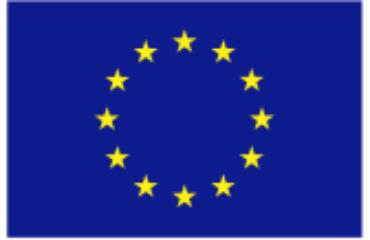
PREPARING FOR DELSA’S
HUMANITARIAN AND EMERGENCY LOGISTICS EXPO (HELIX)
In today’s complex yet interconnected world, responding to disasters and other humanitarian emergencies drives a need to rethink and innovate our disaster management processes. Furthermore, with increased disaster risks as the global climate warms, rapid mobilisation of humanitarian assistance and an efficient flow of relief supplies must be achieved. Innovation in the name of saving more lives continues to form an integral part of this solution.
What makes something “innovative”? The answer differs from person to person; but in general, we find something innovative if it tackles a problem in a different way from the norm. This may include looking at the problem from a different perspective, approaching the solution in an unexpected way, or applying a solution from a diverse or different context to work within a context it was not designed for.
In the modern era, the search for innovation is often led by profit-driven companies, and within the disaster management field this is particularly prevalent for businesses who focus on the issue of supply chain and logistics optimisation. For example, DHL has developed its map-based application Resilience 360 as a risk analytics tool for its commercial operations, which also has clear relevance to humanitarian logistics and supply chain management.
With many important developments in commercial logistics, actors within the humanitarian sector must take stock and critically review innovations to understand how they can improve disaster management – from pre-disaster through to the response and recovery phases. Such innovations hold potential to solve challenges concerning the transport, storage and distribution of relief assistance, as well as well as improve the design of relief items themselves.
Immediate access to vital aid such as sanitation, medicine, shelter, and nutrition are key elements of swift disaster response. Examples of innovations in this area include improved product designs of items such as collapsible jerry cans for household water storage, field-deployable medical tents, portable and self-contained semi-rigid shelters, and tools for relief personnel and search-and-rescue operations.
Another key area for disaster managers is the importance of data and information access and utilisation. Increasingly, sharing of satellite imagery – combined with drone technology and robotics – has been used to assess the immediate impacts of disasters and support search-and-rescue operations. Such innovations were evident during the 2018 Central Sulawesi earthquake and tsunami response.
Additionally, new and environmentally-friendly technologies – especially in manufacturing and transportation, which are especially critical to logistics – form another frontier that is being developed within innovation efforts in the humanitarian sector. This includes the use of renewable energy sources, such as solar power, in logistics transportation, and recyclable materials for developing emergency relief items. Such examples of environmentally-conscious developments are increasingly important given the undeniable link between climate change and increasing environmental disasters.
While it is easy to be swept up with technological hardware and digital innovations, many innovations may also be simple interventions that reach the most vulnerable groups. For example, the survivors of Typhoon Haiyan – particularly the elderly, people with disabilities and pregnant women – were offered a choice between “direct build” or cash transfers for their shelter assistance, thereby ensuring suitable opportunity for survivors to repair or rebuild their house. Cash transfers and vouchers are also being increasingly utilised over direct provision of relief items, allowing affected populations in making their own decisions on priority expenses during the aftermath of a disaster.
Such a wide array of topics may seem intimidating, but are nevertheless a critical component for any humanitarian effort. The AHA Centre in its role as the coordinating body of disaster management in Southeast Asia, and as part of its core mission of Knowledge and Outreach, continues to participate in and drive forward conversations regarding research and innovation in disaster management and humanitarian logistics.
The AHA Centre’s Disaster Emergency Logistics System of ASEAN (DELSA) programme’s upcoming event, the Humanitarian and Emergency Logistics Expo (HELiX), forms the newest component in the Centre’s steadfast commitment to this role. The event, which will be held in 20-25 May 2021, aims to foster exchange and discussion of new and emerging innovations in the field of humanitarian logistics through an exciting array of panel discussions featuring experts and innovators. HELiX also includes the AHAckathon (a software development competition) and iPitch (an innovation pitching competition), that are both aimed at encouraging and generating diverse new ideas from students, amateurs and professionals. The event is being held as part of Viet Nam’s National Week of Disaster Prevention and Control, led by the Viet Nam National Disaster Management Authority. HELiX will be held in a fully online format, and invites the participation of youth, students, and established agencies in developing new approaches and solutions within this dynamic field through technology and creative design thinking.
Written by: Yohanes Paulus, Caroline Widagdo and Gaynor Tanyang | Photo Credit : AHA Centre


